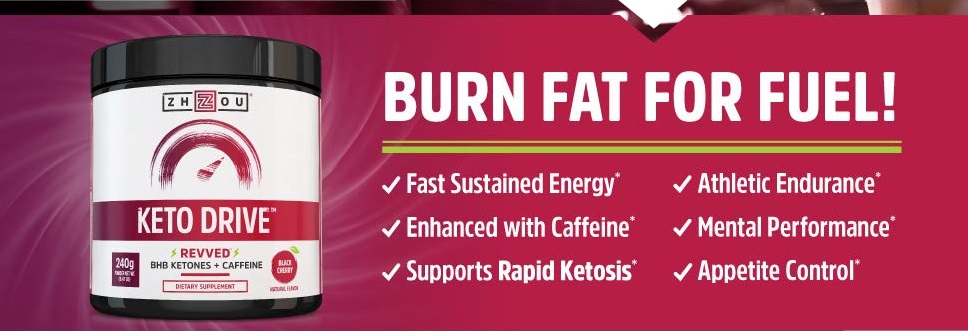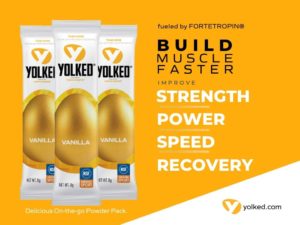
When people are on a keto diet, they for some reason still tend to think that fruit is going to operate a little bit differently within the body, as opposed to some other straightforward carb sources, meaning that they’re okay to have some fruit because it’s not a typical carbohydrate. Fruit on keto diet is not that wise.
The reason I wrote this article is not only to help clear up some confusion that surrounds fructose and glucose metabolism, but also to give some of you fruit-lovers a list of fruits that you are allowed to consume on a ketogenic diet, even though a strict keto is against it.
For some reason people tend to look at fruit in a little bit of a different way, putting it entirely in a different box, perhaps because throughout our childhood we have been repeatedly told that fruit is good for you.
As far as carbohydrates are concerned, they tend to think that because it’s fruit or because it’s natural, that it’s not a real damage-causing carbohydrate, in terms that it won’t affect them on a ketogenic level, but it’s actually quite the opposite.
Fruit can affect ketosis significantly more than some other carbohydrate sources, simply because it heavily engages our liver, which as you know is of prime importance when you’re on a high fat diet.
When it comes down to ketosis, one of the most important things that we have to remember is that ketones are produced in the liver, so anything that is affecting the liver is going to have a huge impact on our ketone production, and since fructose is heavily metabolized within the liver, it will dramatically affect our ketosis.
When it comes to carbohydrates that we consume, they usually come as a good old-fashioned glucose, and fructose which comes from fruit. Now why glucose is significantly more preferred, is because it’s used by virtually every single cell in the body, whether you’re in ketosis or not. Every cell has the capability of utilizing glucose to turn it into energy.
On the other hand, fructose can only be metabolized in the liver, and it can not be used by every cell in the body. It can really only actively be processed and metabolized within the liver, so right then and there it significantly impacts ketosis in an incredibly negative way.
You see, whenever we consume regular carbohydrates that are not coming from fruit, the liver only has to take about 20% of the carb-processing load, but when we’re consuming fruit, the liver has to take a 100% of the processing load.
And when it comes down to restoring what’s called liver glycogen, the carbohydrates that are stored in the liver, it’s a lot easier to store carbohydrates in the liver from fruit than it is from other carbohydrates. And when it comes down to producing ketones, we need the liver to be completely depleted of glycogen or as close to it as possible in order to produce the maximum amount of ketones.
Now keep in mind that since glucose can be used by every cell in the body, when we consume glucose, we have an ability to burn it up really fast, but since the body can’t readily use fructose, whenever we consume fruit, fructose has a tendency to get turned into free fatty acids and triglycerides, and ultimately fat deposits, significantly easier.
So whenever we consume carbs, our body takes glucose, again the simple sugars that come from regular carbohydrates and it strings them together into something known as glycogen and then it stores them in a couple of different places. It takes them and it stores them inside our muscles, within our skeletal muscle system, and then some of it is taken and stored within our liver.
You see, the skeletal muscle tissue does something different with its glycogen than the liver does. The main job of the glycogen that’s stored inside the liver is simply to maintain blood sugar. We’re trying to keep our blood glucose levels elevated enough so that we constantly have enough energy.
Now when it comes down to the muscle glycogen deposits, they are used only whenever we’re exerting energy for activity. So for example, if you were to break into a sprint and you needed energy, you’d tap into the muscle tissue stores, but if you just needed regular blood glucose levels to be elevated for a traditional life, you’d pull it from the liver.
What ends up happening is, once we burn through all the glycogen stored in the liver, through all the deposits of liver carbs, our body switches to being able to produce ketones.
When a lot of self-proclaimed keto experts out there say you have to go through your entire carbohydrate stores before you ever start to burn carbohydrates – even though there is some truth to that, it represents an overgeneralization to try to make ketosis extraordinarily exclusive. In reality, all you have to do is burn through your liver glycogen/liver-stored carbs first.
In fact, even when you’re in ketosis, your levels of muscle glycogen are still elevated because you’re not really tapping into them unless you’re doing heavy weight training or high-intensity interval training, so you’re really just trying to burn through the liver glycogen.
Knowing that, we’re always topping off the tank with fruit, thus never truly giving our body the chance to actually create ketones, whereas if we were to consume regular carbs, our body would switch to creating ketones much more readily. So we have more of an implication that can occur as far as stopping ketone production by eating fruit than we do by eating straight-up sugar. Not saying you should do either one.
There was actually a study that was published in the Annals of Nutrition and Metabolism that put body’s utilization of fructose vs glucose into an interesting perspective as far as exercise is concerned.
What they wanted to look at was how did fructose compare to glucose when it came down to post-exercise in actual recovery. Well, what they found was pretty interesting.
See after two hours they found that a little bit of fructose actually did allow a little bit of skeletal muscle recovery, but glucose did the bulk of the work. After four hours post-exercise, they found that almost all the fructose did is that it had restored liver glycogen, but hadn’t touched muscle glycogen, therefore meaning that if you were to eat fruit post-workout, you would not be even stimulating your recovery, you’ll be just adding it to the liver, and that’s about it.
So, if you’re on a ketogenic diet and you were to suddenly just eat a bunch of fruit post-workout, you would be much more likely to kick yourself out of ketosis than if you were
to have a couple of grams of regular carbs. Again not saying you should do either/or.
Which Fruits Can You Have On A Ketogenic Diet?
Let’s finally get to which fruits you could have in small amounts on a ketogenic diet. And let me say this as a preamble to all of this – you don’t need to have fruits. And again, the reason I wrote this article is because a lot of people have told me that they truly miss fruits while on keto. So, let’s get to it.
Avocado
The very first one I want to talk about is avocado. Here I’m risking on losing some of you because to all of you guys avocado is a fat.
Well, here’s the thing. Avocado is a fat, and it’s definitely higher in fat than it is in carbs, but it’s still technically a fruit, and the sugar or the carbohydrates that are in avocado are fructose, so if you ever notice that if you’re having a bunch of guacamole or a bunch of avocados that your ketone levels might read a little bit lower, that’s because the fructose from it is going straight to the liver.
You don’t want to go overboard on the avocado because of this, in fact, I usually recommend no more than one whole avocado a day while you’re on a ketogenic diet.
Blackberries
The next one I want to suggest would be blackberries. Here’s a cool thing about blackberries. Overall the net carbs are pretty darn low. We’re talking six to seven grams of net carbs in about a cup.
Now overall you’re still gonna have 15 to 20 grams of carbohydrates when you count fiber and you count some of these other things that blackberries contain, but what I want you to realize is that you could have a small amount, maybe a quarter of a cup or so, without ever having a problem.
You might temporarily stunt your ketone levels, yes, but since it’s so low glycemic and has such a high fiber content, it’s going to absorb slow enough that you shouldn’t have too much of an issue.
Raspberries
So then we’ve got raspberries, which are in kind of a similar ballpark as blackberries. They still have that same slow digesting metabolism that’s going to allow them to be broken down a little bit slower.
They still have a high amount of fiber, so it’s breaking down a little bit slower, but again they still have the fructose that will contribute to liver glycogen, so you want to keep it to about a quarter of a cup. Yeah, nothing crazy, but if it gets your sweet tooth satisfied a little bit, it’s better than loading up on a bunch of artificial sweeteners.
Strawberries
Then we have strawberries. Same ballpark, except on strawberries you can go a little bit higher because of their higher water quantity. Since there’s more water in them, of course, their sugar content will be lesser volume-wise, so you can have maybe a half a cup or so of strawberries, but make sure that you’re not slicing them, since if you do, you’ll end up with ultimately more like a cup.
Alright, I want to clear one thing up before I wrap this article, and address the greatest fear of all – that of spiked insulin. Insulin is not always the issue.
When we look at the fruit, and we look at carbohydrates in general, we always say “oh it’s gonna create an insulin spike and we’re not going to be able to be in ketosis because we’re secreting insulin”. That viewpoint is not always the case since insulin is not the end-all-be-all. We still have levels of insulin that are elevated even on a ketogenic diet.
If we look at a type 1 diabetic, for instance, the reason that a type 1 diabetic could ever go into ketoacidosis is because even when ketones are elevated, if they don’t have insulin to allow those ketones to be utilized by the tissues outside of the liver, you end up with ketoacidosis. So we still need insulin.
Here we’re not stressing the fact that the fruit is causing an insulin spike, but worrying more about what’s happening in the way of the liver glycogen and what’s happening in the way of how the liver prioritizes metabolism of certain things. If fructose is coming in, then the liver has to prioritize the metabolism of that, and not have time for creating ketone bodies.
As always, if you have ideas of questions for future articles, where you want to learn a little bit more about the foods you can and can’t eat on a ketogenic diet, make sure that you comment below.



